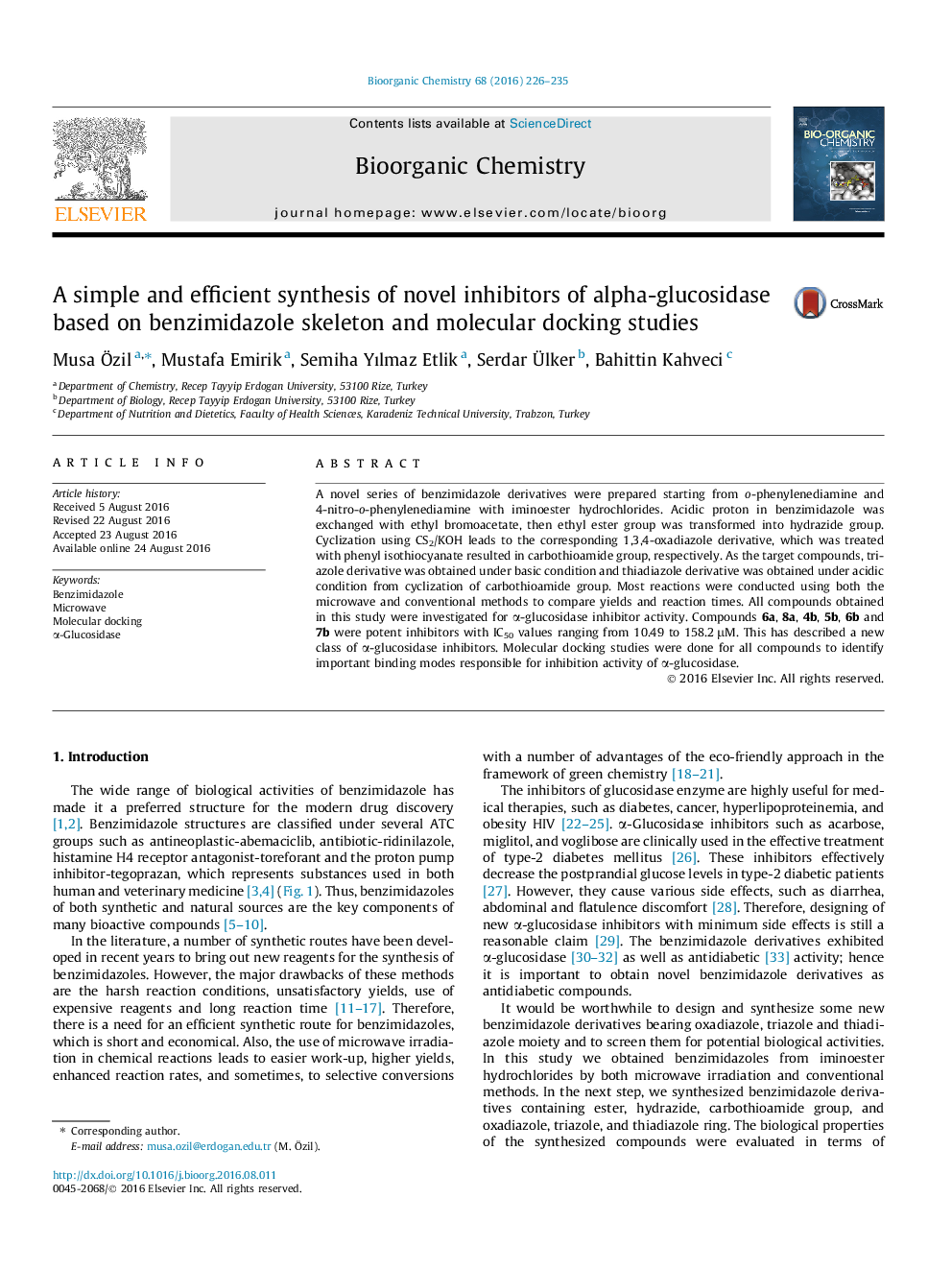| Article ID | Journal | Published Year | Pages | File Type |
|---|---|---|---|---|
| 1355571 | Bioorganic Chemistry | 2016 | 10 Pages |
•We describe the synthesis of a new library of benzimidazole derivatives.•Benzimidazole derivatives showed better α-glucosidase inhibition activity than the acarbose.•Molecular docking studies were performed.
A novel series of benzimidazole derivatives were prepared starting from o-phenylenediamine and 4-nitro-o-phenylenediamine with iminoester hydrochlorides. Acidic proton in benzimidazole was exchanged with ethyl bromoacetate, then ethyl ester group was transformed into hydrazide group. Cyclization using CS2/KOH leads to the corresponding 1,3,4-oxadiazole derivative, which was treated with phenyl isothiocyanate resulted in carbothioamide group, respectively. As the target compounds, triazole derivative was obtained under basic condition and thiadiazole derivative was obtained under acidic condition from cyclization of carbothioamide group. Most reactions were conducted using both the microwave and conventional methods to compare yields and reaction times. All compounds obtained in this study were investigated for α-glucosidase inhibitor activity. Compounds 6a, 8a, 4b, 5b, 6b and 7b were potent inhibitors with IC50 values ranging from 10.49 to 158.2 μM. This has described a new class of α-glucosidase inhibitors. Molecular docking studies were done for all compounds to identify important binding modes responsible for inhibition activity of α-glucosidase.
Graphical abstractA novel series of benzimidazole derivatives containing ester, hydrazide, carbothioamide groups, oxadiazole, triazole and thiadiazole rings were synthesized and evaluated for α-glucosidase inhibition. Three compounds were potent inhibitors with IC50 values ranging from 10.49 to 40.45 μM. This has described a new class of α-glucosidase inhibitors.Figure optionsDownload full-size imageDownload as PowerPoint slide
